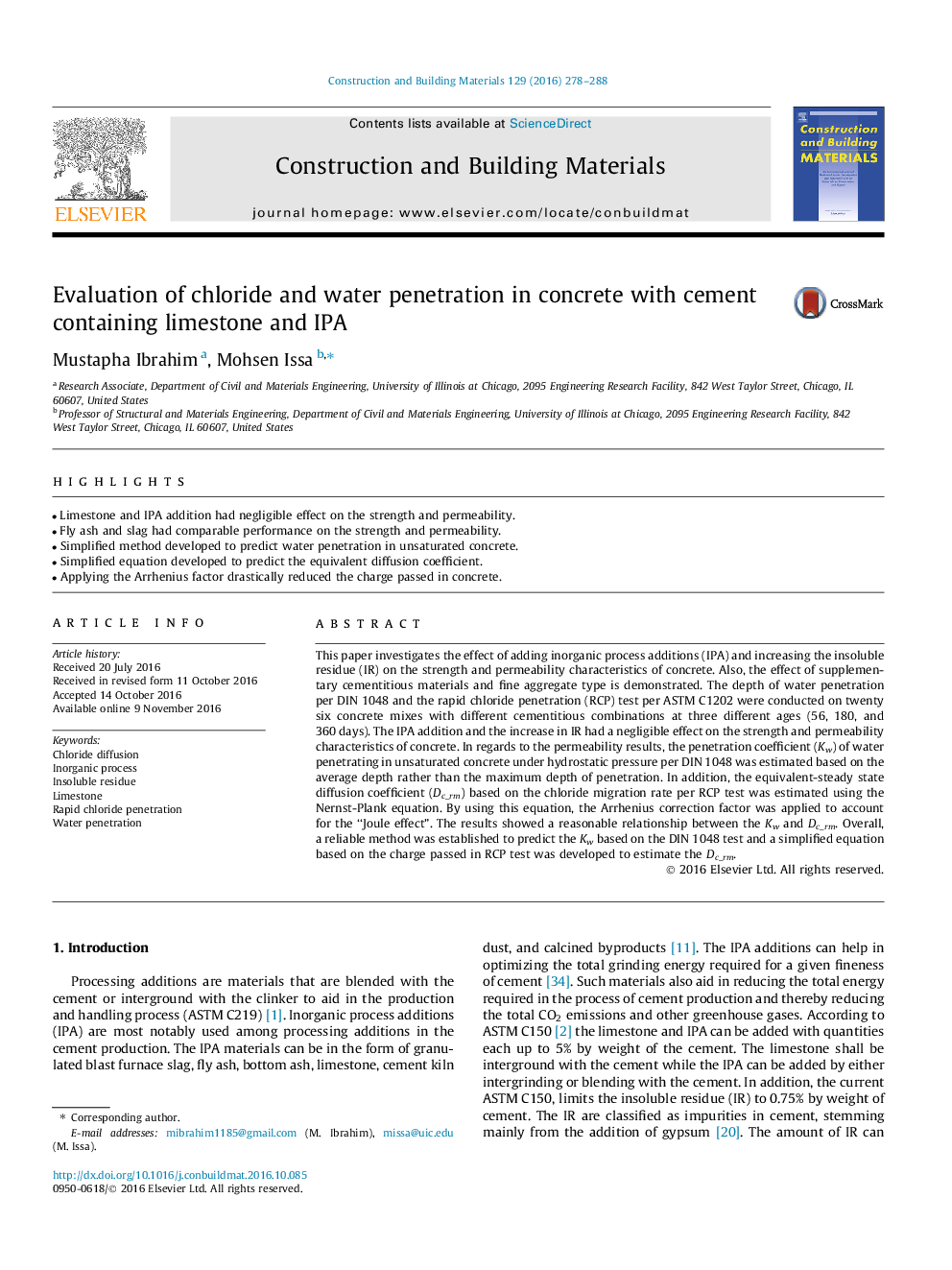| Article ID | Journal | Published Year | Pages | File Type |
|---|---|---|---|---|
| 4913912 | Construction and Building Materials | 2016 | 11 Pages |
Abstract
This paper investigates the effect of adding inorganic process additions (IPA) and increasing the insoluble residue (IR) on the strength and permeability characteristics of concrete. Also, the effect of supplementary cementitious materials and fine aggregate type is demonstrated. The depth of water penetration per DIN 1048 and the rapid chloride penetration (RCP) test per ASTM C1202 were conducted on twenty six concrete mixes with different cementitious combinations at three different ages (56, 180, and 360Â days). The IPA addition and the increase in IR had a negligible effect on the strength and permeability characteristics of concrete. In regards to the permeability results, the penetration coefficient (Kw) of water penetrating in unsaturated concrete under hydrostatic pressure per DIN 1048 was estimated based on the average depth rather than the maximum depth of penetration. In addition, the equivalent-steady state diffusion coefficient (Dc_rm) based on the chloride migration rate per RCP test was estimated using the Nernst-Plank equation. By using this equation, the Arrhenius correction factor was applied to account for the “Joule effect”. The results showed a reasonable relationship between the Kw and Dc_rm. Overall, a reliable method was established to predict the Kw based on the DIN 1048 test and a simplified equation based on the charge passed in RCP test was developed to estimate the Dc_rm.
Related Topics
Physical Sciences and Engineering
Engineering
Civil and Structural Engineering
Authors
Mustapha Ibrahim, Mohsen Issa,
